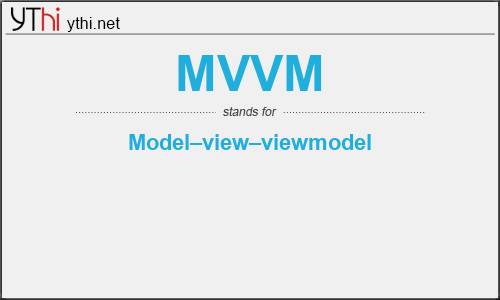What does MVVM mean? What is the full form of MVVM?
The Full Form of MVVM is Model–view–viewmodel.
The purpose of this post is to provide an introduction to the Model-View-ViewModel (MVVM) pattern. While I’ve participated in lots of discussions online about MVVM, it occurred to me that beginners who are learning the pattern have very little to go on and a lot of conflicting resources to wade through in order to try to implement it in their own code. I am not trying to introduce dogma but wanted to pull together key concepts in a single post to make it easy and straightforward to understand the value of the pattern and how it can be implemented. MVVM is really far simpler than people make it out to be.
Why should you, as a developer, even care about the Model-View-ViewModel pattern? There are a number of benefits this pattern brings to both WPF and Silverlight development. Before you go on, ask yourself:
- Do you need to share a project with a designer, and have the flexibility for design work and development work to happen near-simultaneously?
- Do you require thorough unit testing for your solutions?
- Is it important for you to have reusable components, both within and across projects in your organization?
- Would you like more flexibility to change your user interface without having to refactor other logic in the code base?
If you answered “yes” to any of these questions, these are just a few of the benefits that using the MVVM model can bring for your project.
MVVM
means
Model–view–viewmodel![]()
Translate Model–view–viewmodel to other language.


Leave a Reply
You must be logged in to post a comment.